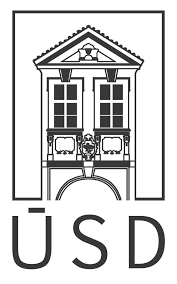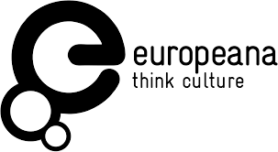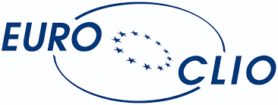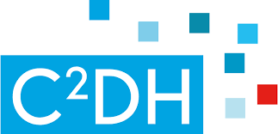Partners
 Centre for Television & Screen Cultures in Transition, Utrecht University
Centre for Television & Screen Cultures in Transition, Utrecht University
Utrecht University’s research initiative Television & Screen Cultures in Transition, short TV/SCiT, is home of a diverse group of television and media scholars attached to the Department of Media and Culture Studies, Utrecht University, and to the Research Institute ICON of the Faculty of Humanities, plus affiliated researchers form other, mostly Dutch universities. The Centre develops, co-ordinates, carries out, publishes and promotes the study of screen cultures in transition from the early 20th century on.
Main research areas are television & screen cultures, and their histories, discursive constructions, and attached practices of users and communities. We suppose that media never just ‘are’, but are constantly in the state of transition while at the same time transforming culture and society. Currently, we do not witness ‘The end of TV’ as many commentators claim, but the re-invention of screen cultures in the digital environment with television and broadcasting still being dominants interfaces within more and more mediatized cultural and socio-technological environments. We also witness the emergence of fascinating new screen ecologies where ‘users’ create new platforms, communities and ways of civic and commercial engagement. These developments challenge not only our established media institutions and infrastructures, they also force us to rethink our concepts, approaches and methods of research. The people of the Television & Screen Cultures in Transition research initiative are dedicated to exploring these developing fields within new perspectives and conceptual frameworks, including studies of our media’s transitional past.
 Institute of Contemporary History, Academy of Science of the Czech Republic
Institute of Contemporary History, Academy of Science of the Czech Republic
The Institute of Contemporary History (USD) is an integral part of the Czech Academy of Sciences. Its function is to undertake primary research into post-1938 Czech and Czechoslovak history in the international context. Within this overall objective, the thrust of the enterprise has changed over time with the main focus of inquiry shifting from the study of key events in the political history of Czechoslovakia during the period of communist dominance, which was paramount in the first years of the Institute’s existence, to a multilayered exploration of contemporary history, which includes the sociological, the everydayness and mundane, as reflected in the lives and thoughts of the ordinary man or woman in the street, the economic and, as already mentioned, the international. The Institute is now structured thematically into four departments. In parallel, there is another structure of smaller, flexible, sometimes ad hoc or temporary centres and research groups (see www.usd.cas.cz/en/research-units).
Part of the Institute’s remit is to organize international conferences, specialized seminars, and workshops. Its scholars serve on commissions, and on the field and academic councils of many universities, academies and other institutions. Likewise, when called upon, the Institute cooperates with organs of state and regional administrative bodies. In terms of its role with the universities, the most extensive cooperation is with the Institute of International Studies of the Faculty of Social Sciences, Department of Oral History – Contemporary History and Department of Political Science of the Faculty of Arts (all Charles University in Prague), with each of which the Institute has embarked on long-term joint projects.
 HumLab, Umeå University
HumLab, Umeå University
Humlab is a vibrant meeting place for the humanities, culture and information technology at Umeå University. In Humlab, students, researchers, artists, entrepreneurs and international guests come together to engage in dialogue, experiment with technology, take on challenges and move scholarship forward. This power is channeled through an open and creative studio environment, which extends across two campuses and a rich ecology of digital platforms.
Students here can work on their own projects or take classes, researchers can meet to discuss exciting research challenges or methodological issues, artists can develop digital installations together with technological expertise from Humlab, and various individuals and organisations can take part in dialogue across boundaries. This is an intensely intellectual milieu, a space for making and creating, yet also a place where you can have just a coffee and take it easy. The programme includes seminars, workshops, short courses, international conferences and art installations.
Current research and development is covering fields such as interactive architecture, religious rituals in online environments, 3D modelling, the study of movement and flow in physical and digital spaces through using game technology, geographical information systems, and making cultural heritage accessible through interpretative tool sets.
 Europeana Foundation (Associate Partner)
Europeana Foundation (Associate Partner)
Europeana is the digital library of Europe and collaborates with thousands of museums, galleries and archives that digitise their collections and create virtual copies of texts, images and objects. Europeana’s mission is to make sure other people find and use these collections once they are made public online. As a fervent advocate of open access policies, Europeana is particularly interested in the research outcomes regarding re-use of heritage. Europeana will advise CADEAH about relevant issues regarding Intellectual Property Rights management (IPR). In addition, Europeana will disseminate the project’s results, promote the virtual exhibition on their plat-form and function as general advisor of the project.
 EUscreen (Associate Partner)
EUscreen (Associate Partner)
The EUscreen Foundation, a consortium of 35 major audiovisual archives across Europe, is involved in CADEAH in many ways. It has helped identify the specific European topics that will be addressed by WP2 and WP3. EUscreen also helps gaining access to European archival material of all member partners and provide an online platform to the original institutional context of the heritage material being re-used in alternative, and sometimes unofficial, contexts. The EUscreen Foundation collaborates in publicly disseminating the results of the project through its network and on its platform EUscreen.eu. This platform will also host a virtual exhibition. The Foundation’s peer reviewed e-journal VIEW functions as the platform for a special issue on CADEAH’s research outcomes (D4.6). EUscreen will evaluate the project’s outcomes in an archival perspective with a particular emphasis on copyright issues and open access policies. Such results flow back to archival partners and inform their policy, also on European level via EUscreens’ leading Partner, the Netherlands Institute for Sound and Vision, being also the leader of the Europena task force Audiovisual Media.
 EUROCLIO (Associate Partner)
EUROCLIO (Associate Partner)
EUROCLIO, with its long-term programme Historiana (“Your Portal to the Past”), participates in the project in different roles. As the European association of educators in the field of history, including professionals at schools, museums and universities, EUROCLIO is the mediator between academic research and the educational application of outcomes. The research out-comes on European issues of heritage re-use, new interpretations of European history and identities will also be picked-up by EUROCLIO in order to develop materials for teaching, since remix videos are a particularly appealing cultural form for students at secondary school level. EUROCLIO also participates in the project in order to advise about using audiovisual tools in educational contexts. The collaboration will furthermore help Historiana to develop its audiovisual agenda with as aim to foster the use of audiovisual heritage in educational contexts. EUROCLIO’s online platform is also available for the dissemination of research outcomes among its professional network in Europe.
 Luxembourg Centre for Contemporary and Digital History (Associate Partner)
Luxembourg Centre for Contemporary and Digital History (Associate Partner)
The Luxembourg Centre for Contemporary and Digital History (C2DH) is designed as an experimental space for exploring new ways of doing historical research and teaching in the digital age. As a trading zone for the negotiation of new knowledge, the DH-LAB promotes a hands-on approach to new digital tools and technologies in the field of history. Beyond that, DH-Lab is a place of critical reflection on both the epistemological and methodological challenges of doing history in the age of big data and digital meta-sources. C2DH participates in developing and testing the digital methods for tracing and tracking the online circulation of digitized audiovisual heritage; it engages in the comparison of the appropriation of audiovisual heritage as compared to original material and acknowledged academic historiography. C2DH will distribute the project’s outcomes regarding digital methods and popular digital historiography; and it participates in the meetings of the advisory board of stakeholders that act as a sounding board to advise about the project’s progress.
 Netherlands Institute for Sound and Vision (Associate Partner)
Netherlands Institute for Sound and Vision (Associate Partner)
The Netherlands Institute for Sound and Vision is a leading knowledge institute in the field of media culture and AV archiving. We initiate research that makes our media heritage available and searchable. We follow relevant innovations in media archiving, participate in research projects and experiment with new technology. We work together with scientists and heritage professionals. We share knowledge and experience in national and international networks.
Sound and Vision is the hub for the AV and media sector within the Network Digital Heritage. We are a physical and virtual meeting point for professionals and interested parties, a place to meet, discover content and share knowledge. In this way, we can permanently store and manage the Dutch media heritage and keep the collections alive. We organize our knowledge about media culture and av archiving in 8 themes: Digitizing, Preserving, Metadata, Users, Access, Collection, Presentation and Media Literacy.


